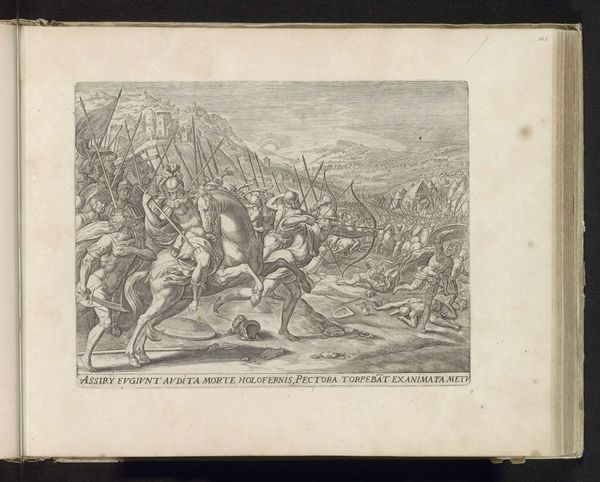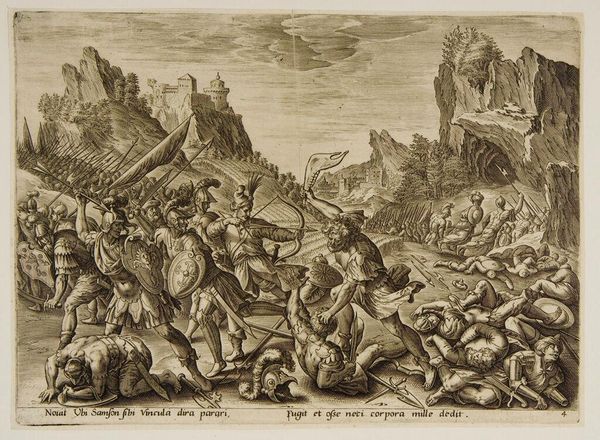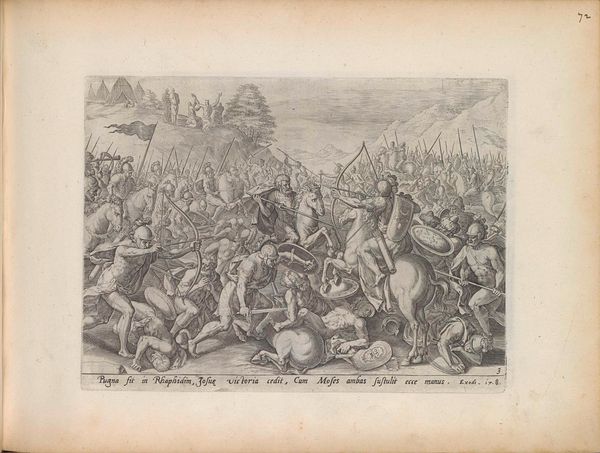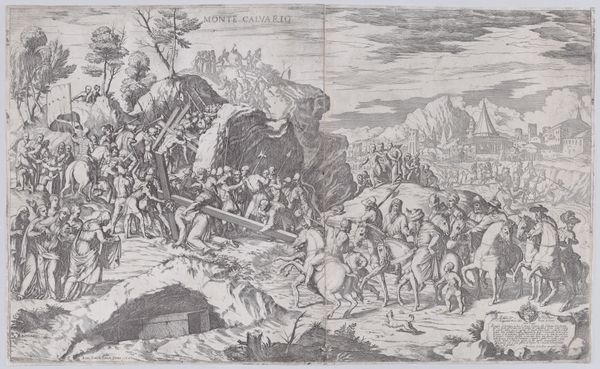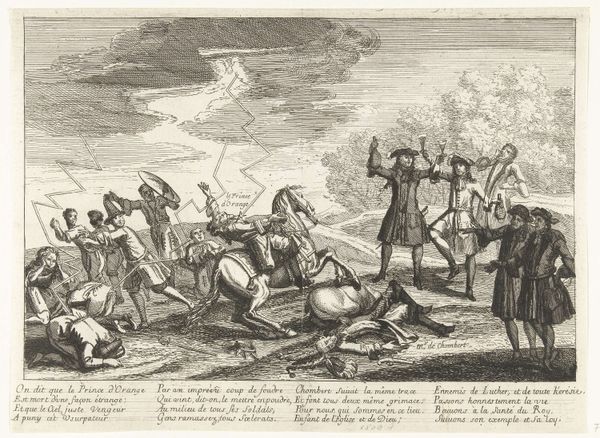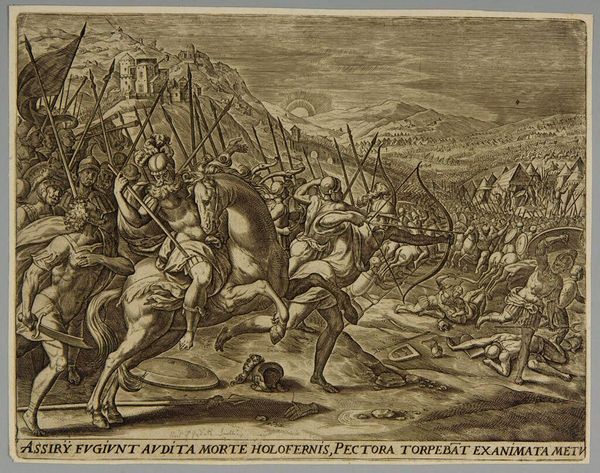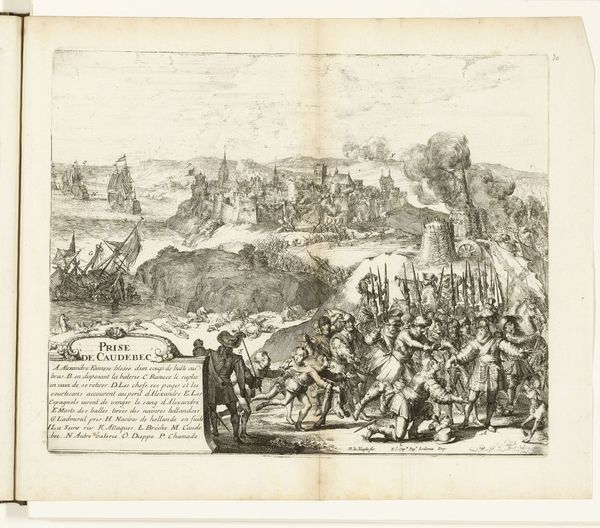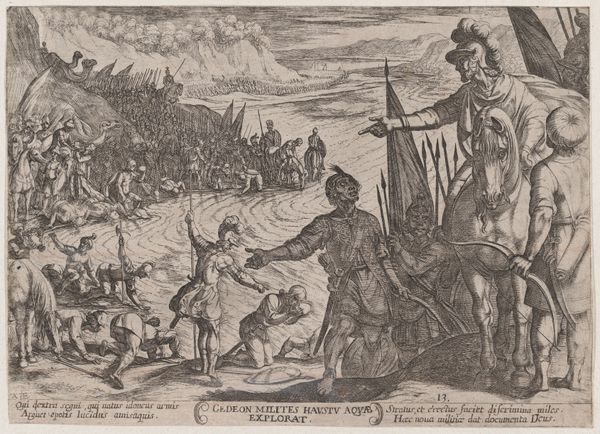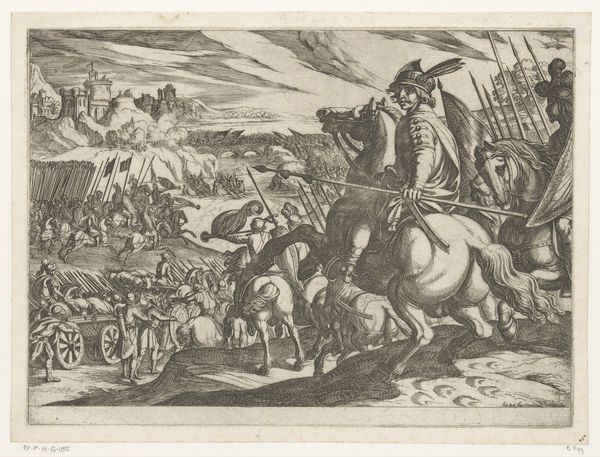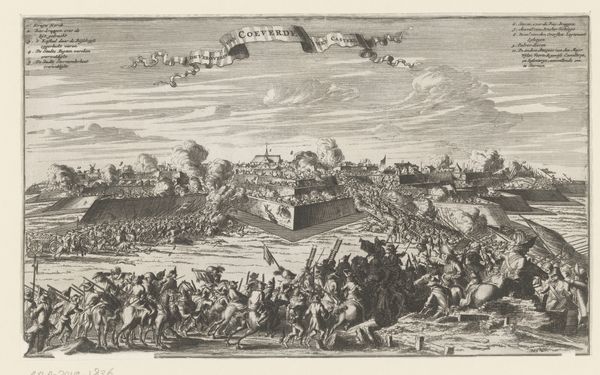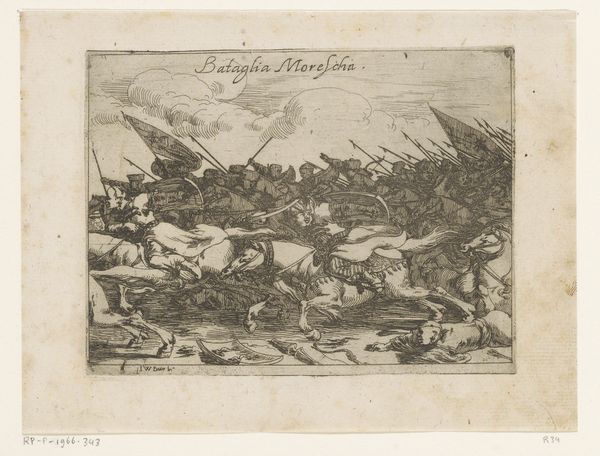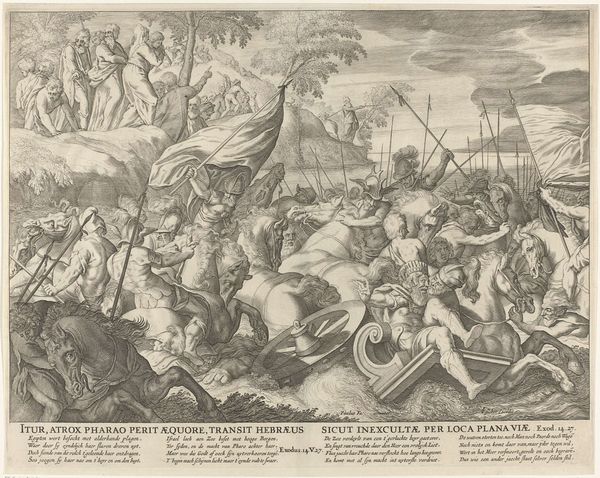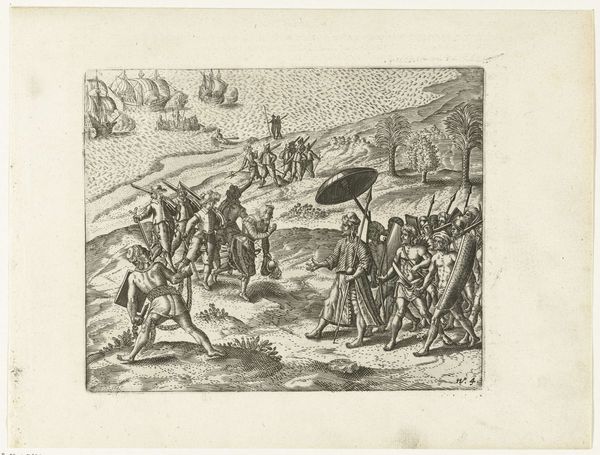
Dimensions: height 203 mm, width 261 mm
Copyright: Rijks Museum: Open Domain
Gerard de Jode’s “Flight of the Assyrian Army” is an engraving made in the Netherlands sometime in the late 16th century. De Jode's image illustrates a moment of crisis and social upheaval, depicting the Assyrian army in disarray after the death of their leader Holofernes. The image itself creates meaning through its dramatic composition and attention to detail. The chaotic scene of fleeing soldiers, combined with the cultural references to classical antiquity in the soldiers' attire, invokes a sense of historical and moral significance. Made in the Netherlands during a period of intense religious and political conflict, this print reflects the social conditions of its time. The story of Judith beheading Holofernes, of which this is a sequel, was often invoked during the Dutch revolt against the Spanish Empire, as a story of a small group defeating a larger oppressor. By studying prints like this, we gain insight into the complex interplay between art, religion, and politics in early modern Europe. The Rijksmuseum's collection and archives offer invaluable resources for understanding the social and institutional context in which this print was made and consumed.
Comments
No comments
Be the first to comment and join the conversation on the ultimate creative platform.
